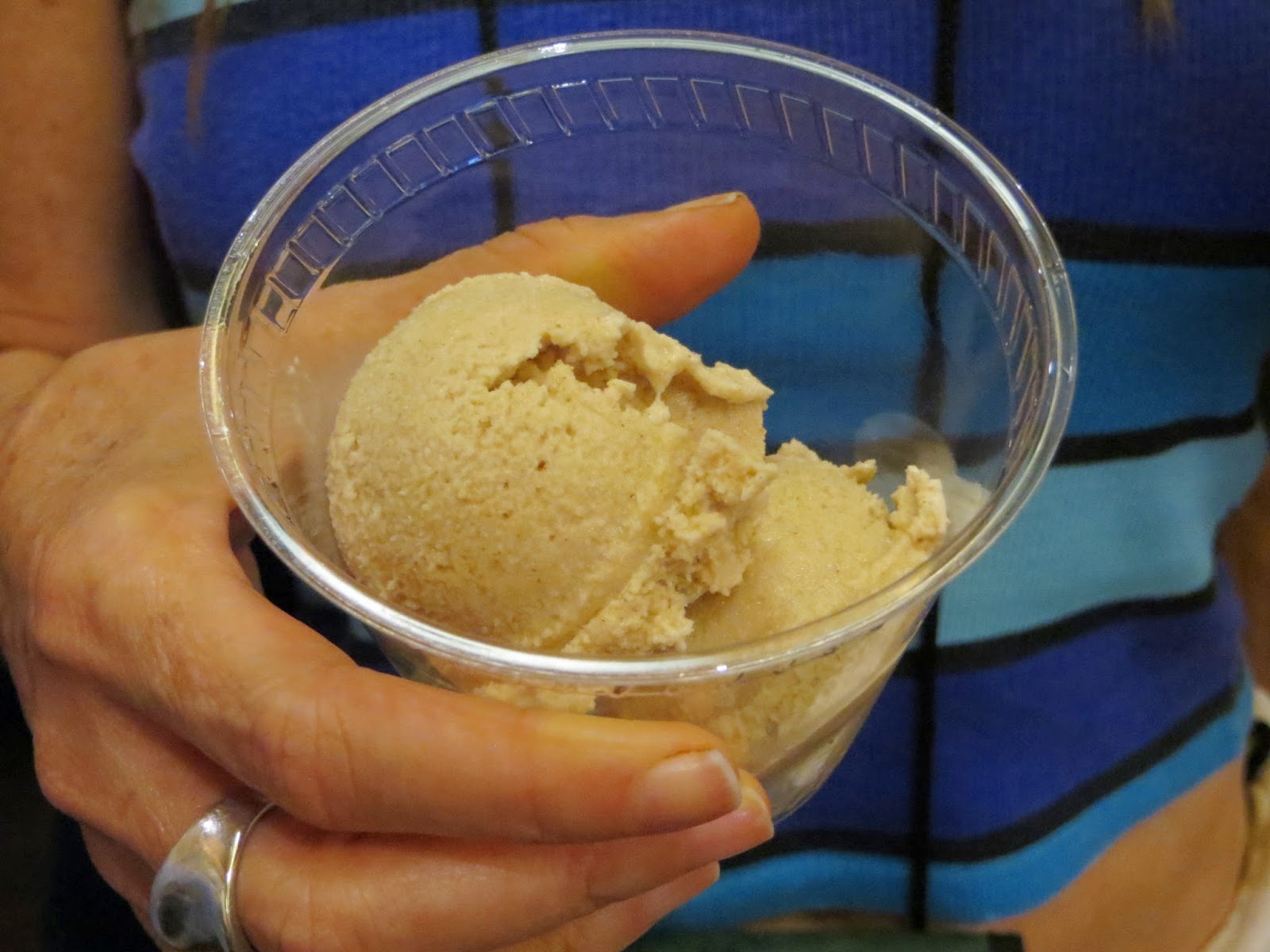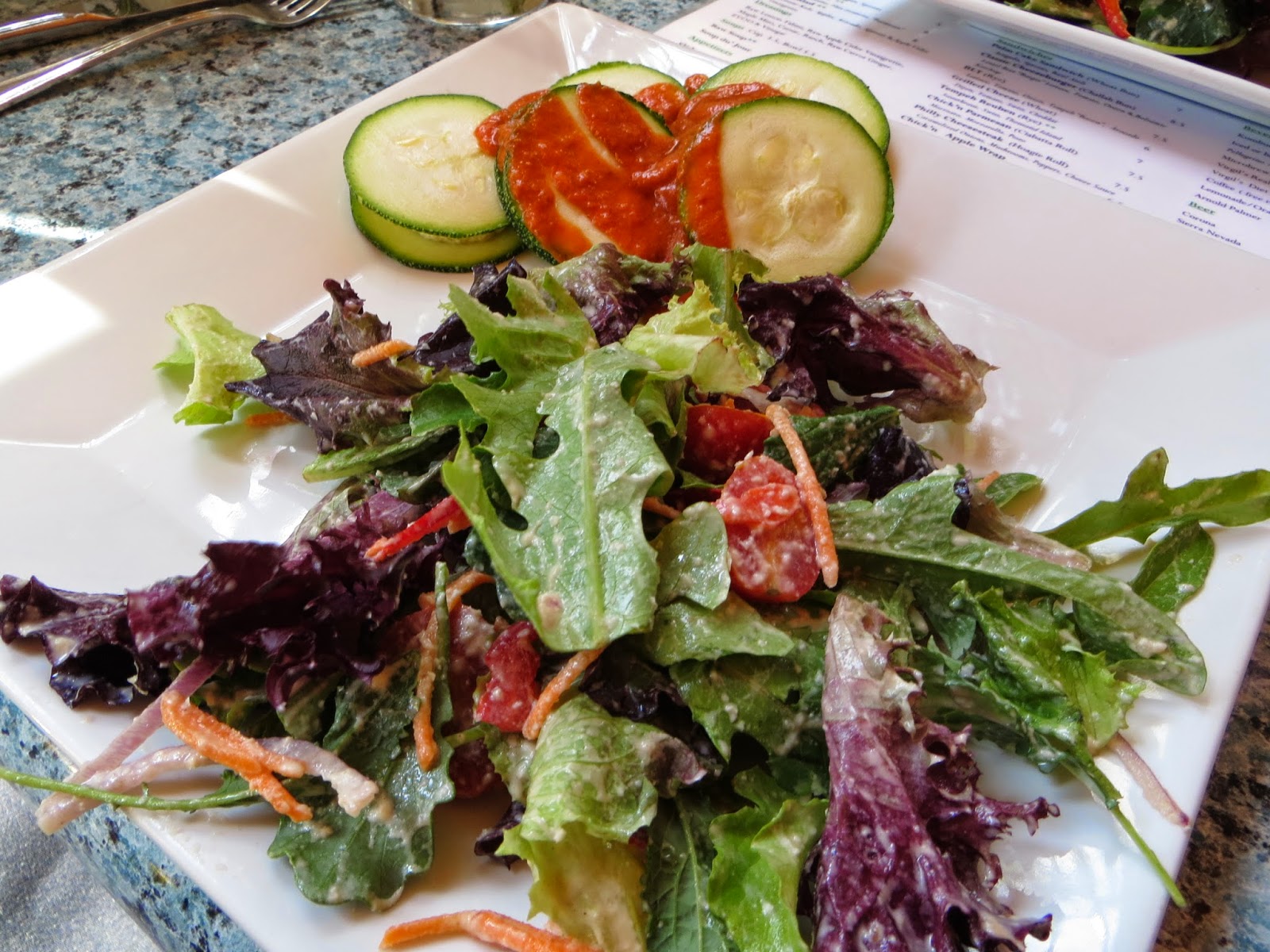For people going to Hippocrates Health Institute for jump-starting their immune system and cleansing their bodies, HHI really puts on a great raw food spread for doing just that. Executive Chef Ken Blue, pictured below, is in charge of ordering quality food - organic, as chemical-free as possible in this day and age, and foods known particularly known to be beneficial to the body. The point of the 100% raw food diet at HHI is to utilize all of the enzymes, vitamins and minerals in plant-based foods that get destroyed with heat. Also, while eating food in the freshest form as possible, the enzymes, vitamins and minerals are giving the greatest benefit to the body.
 |
Executive Chef Ken Blue in front of a sprout and fresh veggie spread.
The picture was borrowed from HHI's Facebook profile. |
The one-week, two-week or full three-week program is to not only make food available to the visitors but also to educate them so they can take the raw-food lifestyle home with them and continue benefiting on the maintenance or recovery diet of nutritious and wholesome food.
 |
| A large kale-leaf "taco" stuffed with sprouts, a light nut "meat" with seasonings and some other veggies. |
 |
The "meat" and veggie stuffing for my kale-leaf "taco".
I was satisfied after eating one taco! |
 |
Once a week on a particular day something in the food line has a "cooked" item. Today it was a fiber-rich
whole-food prepared taco shell. I tried one but found the kale-leaf taco tastier. This hit my stomach too hard
and I tossed most of it (sorry to waste). |
When looking at the "limited" food display in regard to calories, people often fail to see how they can power their bodies on such low-calorie and simple fare. What they don't realize is that the body fed with heavy fats and cooked carbs is not digesting the intake properly, and food undigested bogs down in the intestines, over time creating problems like flatulence, gall stones, ulcers, diverticular diseases, leaky gut syndrome, to name a very few.
 |
| Yum! Raw kelp (I think) noodles and a light raw something-or-other sauce. Nice!!! |
 |
| The idea of raw food eating at HHI is to have 50% of the plate with a variety of sprouts and the other 50% can be veggies like peppers, carrots, celery, olives, cabbage slaw and a small amount of raw dressing, or the raw noodles with sauce. |
For the people who come as three-week guests, after the first week they smile when the newbies go through the food line piling their plates super-high as if they haven't eaten already that day ... and end up eating it all and sometimes going back for more! The first three days the guests are eating, they feel starved on the low-calorie fare, but then they start tapering off on the amounts, and by the end of the week they take a decent plate of food and feel very satisfied. Their bodies have adjusted and they feel satisfied.
It is the undernourished body that has food cravings!
On average by the time the guests are ready to leave at the end of three weeks, they are eating and being quite satisfied with about 1,500 calories a day. This seems like very little, but the concept of counting calories is a modern concept based on easy access to high-fat and high-carb
foods, which is making people grossly overweight and demanding that they count calories.
For people on the raw food diet who are sports players or have high metabolisms, they can eat more avocados, coconuts and the rich variety of nuts and seeds available that people already eating high-fat diets are told to avoid. These plant fats are unsaturated and therefore can be easily assimilated in the body.
And a BTW, people are warned off of coconuts because they are said to have long-chained fatty acids like meat. For people doing their research, they will quickly realize that coconuts are medium-chained fatty acids and therefore so very unlike the long-chained fatty acids of meat aka saturated fats. Coconuts are good for people. Unfortunately, since I have candida I react to the sugar in the coconut meat and milk (a young coconut sugar breakdown is approximately 50% glucose, 35% sucrose, and 15% fructose) so they're off my diet. However, coconut oil doesn't contain that sugar and is utilized differently by the body. So, strangely it benefits the GI tract by actually fighting harmful bacteria and over time repairs pinpoint holes in the GI tract that were created by the candida (fungus) that has attached to its walls and penetrated beyond to leak food particles into the body.
 |
THIS IS WHERE THE RICH ENZYMES, VITAMINS AND MINERALS ARE!!!
Fresh young sprouts - loaded with energy and extremely high in plant protein! |
Unlike common belief that calories matter for being healthy, it's NOT the calories but the nutrition. With the raw food diet if done properly (and usually properly means a high amount of young sprouts which are absolutely packed with mega-nutrition), the person would eat a full-nutrition diet and his/her cravings, because the body is well nourished, would virtually disappear.
When the head administrator was asked how many calories should a raw foodist eat, he furrowed his brow and said, "It's not the amount of calories that needs to be counted but the amount of nutrition." After saying that and the calorie-question kept coming up, he finally said that on average the raw foodists eats about 1,500 calories a day, but he was quick to add that counting calories is not something raw foodists typically do. With their lifestyle change from heavy fatty diets to raw foods, calorie-counting gets thrown out the window, and a pursuing a diet of various nutrition-rich food becomes the focus.






































